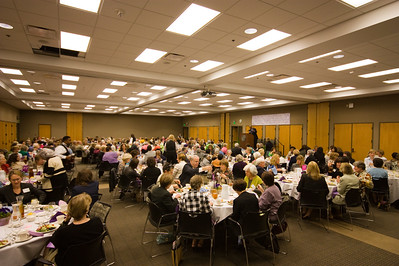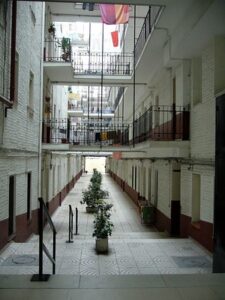The Morris Lawrence Building is arguably one of the most “public” buildings on campus. Because it hosts so many events each year, the public probably has more contact with it than any other WCC building.
Over the past decade or more, WCC has neglected necessary maintenance on the building. In fact, $8M of a planned $9M renovation of the building will cover its maintenance issues. WCC plans to close the building for the first six months of 2021 to complete renovations.
The coronavirus pandemic has shuttered the entire WCC campus. Right now, no one knows how long this outbreak will last, or what the community will require. Reportedly, doctors are now diagnosing the virus in people who have no history of travel. This generally indicates that people are acquiring the disease locally, meaning that the virus is now in the community and is spreading rapidly.
Why COVID-19 is such a problem
While Washtenaw County has three large hospitals, a top-rated medical school and a significant number of nursing programs, it also has a fixed number of hospital beds. According to researchers at Harvard’s TH Chan School of Public Health, between 20% and 60% of individuals who contract COVID-19 in the United States could require hospitalization. A recent article in Health Affairs shines a light on a looming problem.
The article’s authors assumed that 40% of COVID-19 cases would result in hospitalization. Using population figures, the authors suggest that such a rate of infection would put nearly 21M Americans in a hospital. Nearly a quarter of those people will need ICU treatment. Without serious control measures and assuming a 6-month time period, that would leave American hospitals needing 1.3M more hospital beds than we have. If we could extend the active infection cycle to 12 months, American hospitals might have enough regular hospital capacity but would still fall short of the number of ICU beds they’d need to care for the sick. To help alleviate the demand for beds, hospitals are postponing scheduled hospitalizations. They’re also looking for other ways to increase their capacity.
The Morris Lawrence Building in a disaster
This is all well and good, but what does any of this have to do with the Morris Lawrence Building?
Someone once told me (and I have no idea whether this is true or not) that local disaster preparedness plans call for the ML Building to provide overflow capacity for patients from St. Joseph Mercy Hospital, if needed. The idea was that the ML Building -with its configurable interior – could provide “ward space” for many patients in need of hospital care. One thing that lends credence to this notion is that the building has its own diesel generator.
Hospitals are typically licensed for a certain number of beds. The license doesn’t just cap a hospital at X-number of beds; it specifies the level of care associated with each bed. If you’ve been paying attention to what’s happening, the Governor has put into place measures that temporarily lift the number of beds hospitals are licensed for. In other words, hospitals can admit more patients than they otherwise could. They can also build temporary buildings and convert non-hospital spaces into care facilities.
If the Morris Lawrence Building does -in fact- have a role to play in the County’s disaster preparedness plan – and the WCC administration has allowed the building to deteriorate so significantly knowing that the building could be requisitioned for hospital service during a public health emergency – the Administration and the Board of Trustees should be held to account for this egregious disregard for the (literal) health and well-being of the residents of Washtenaw County.
It also clearly underscores our immediate critical need for an Asset Protection policy.
Photo Credit: Washtenaw Community College , via Flickr









